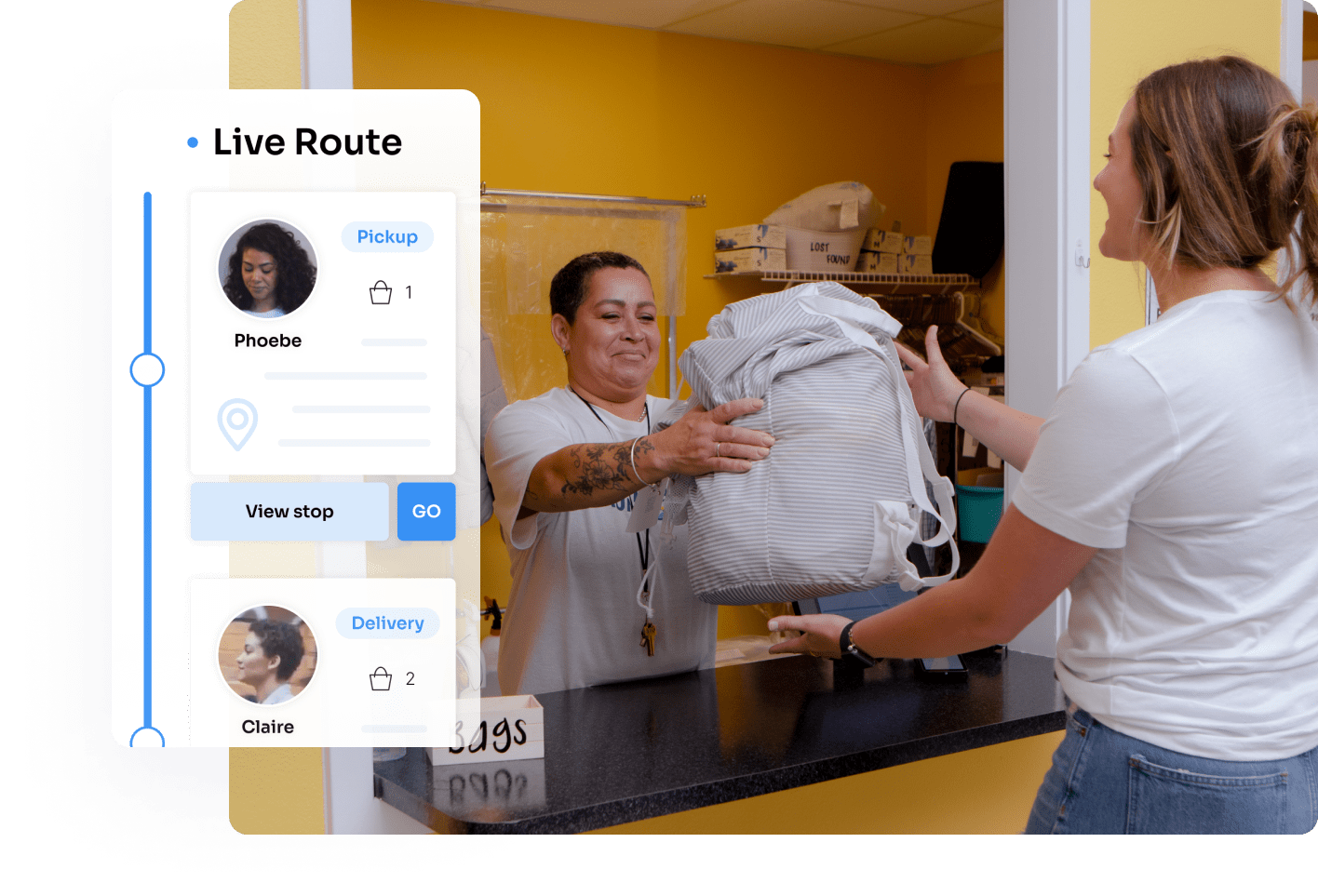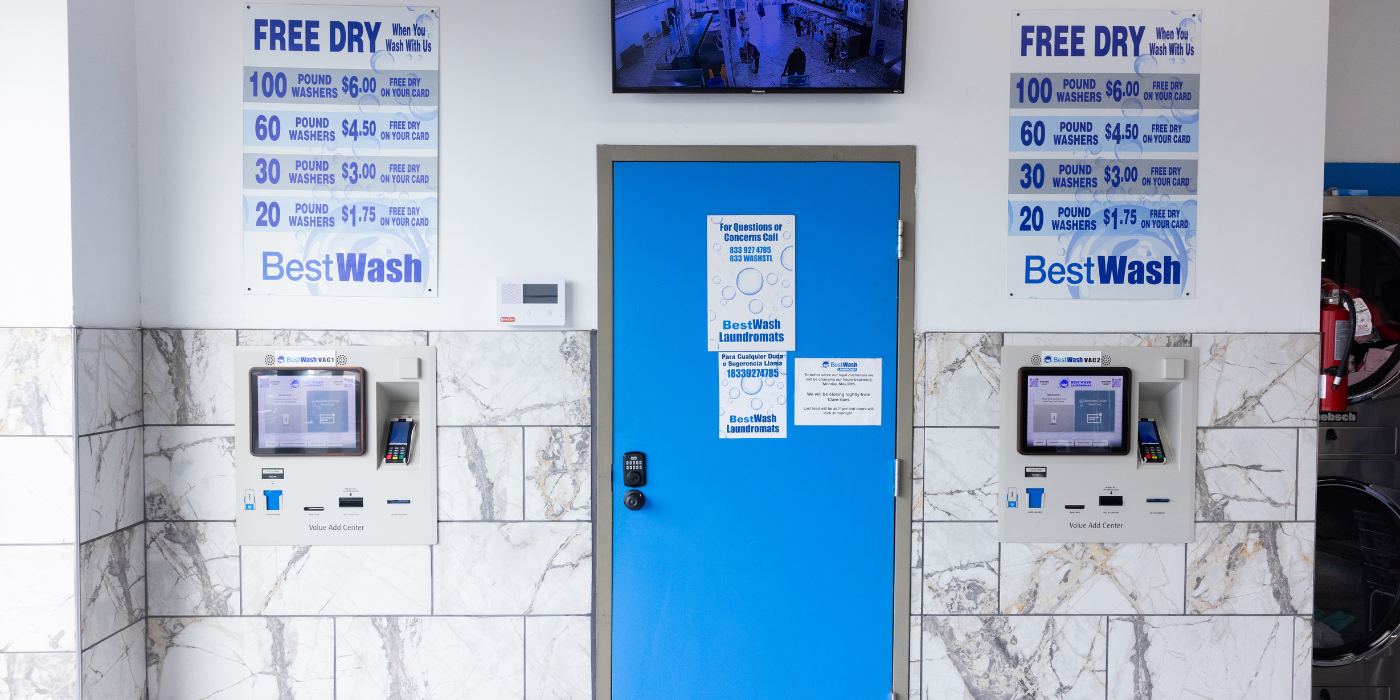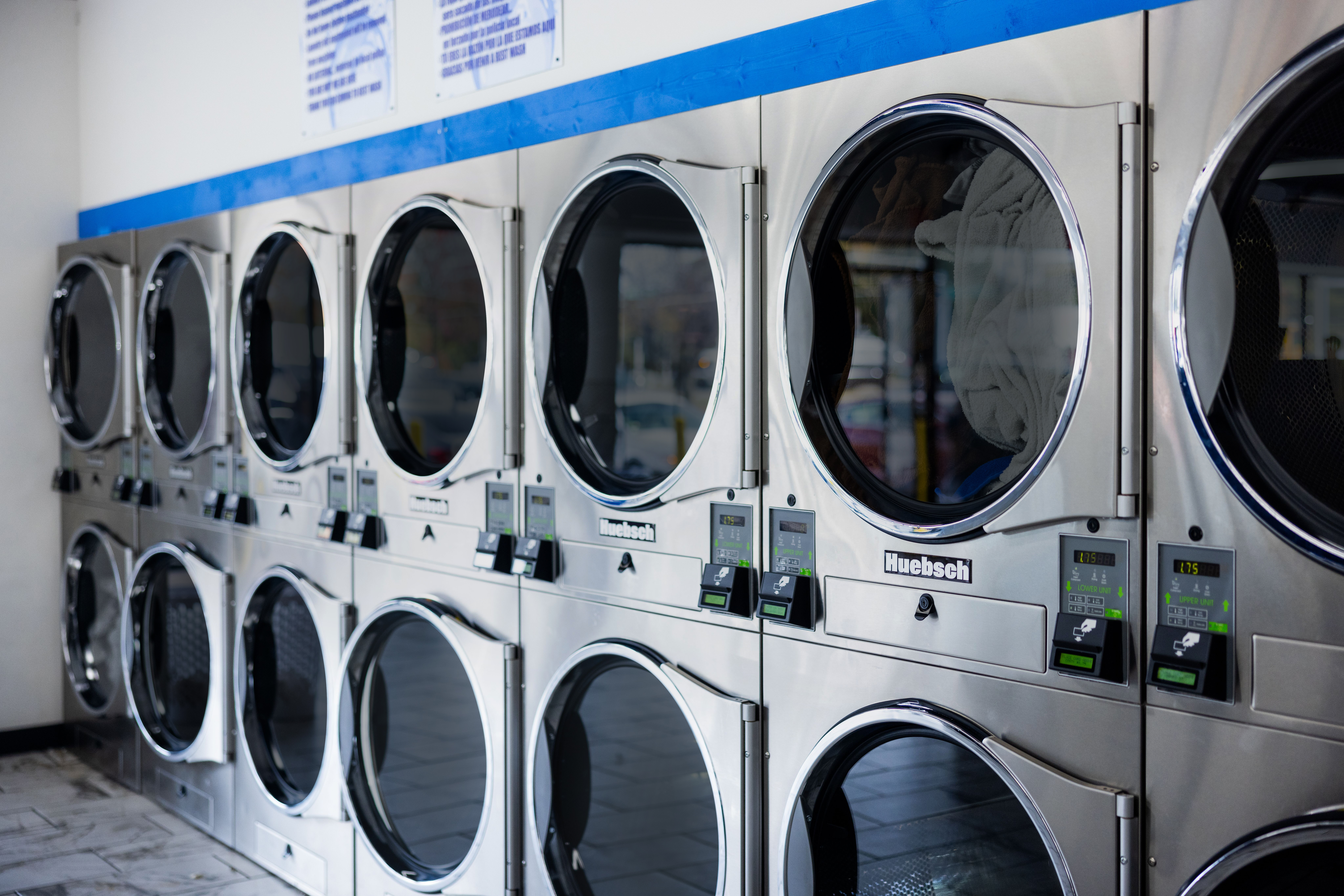In this blog post we’ll explore the different types of systems, which ones are best for your laundromat and customers, and important factors to consider on your journey towards a prosperous future.
What are the different types of laundromat payment systems?
From coin-only to cashless and hybrid methods, the possibilities for your laundromat are many. You’re probably wondering, what are the different types of laundromat systems?
Here are your main options:
- Coin-only
- Credit and debit card readers
- Smartphone apps
- Coin/cashless hybrid
- Prepaid cards
Traditional coin-operated systems
Coin-operated systems function using a simple mechanism that has been a staple in the industry for almost a century: users insert coins into the machine to activate it. Simple and elegant, coin-operated systems offer a tactile payment method that resonates with tradition.
Pros of coin-operated laundry machines:
- Cost-effective
- Universally recognized
Cons of coin-operated laundry machines:
- Security concerns
- Maintenance
- Global shift to electronic payment methods
Heavily established laundromats that still rely on 100% coin-operated machines may find that there’s no immediate need to modernize their system, but those who are just opening up shop simply don’t have that luxury. Coin is the laundry industry’s bread and butter, but isn’t it time to expand the wheelhouse?
Introduction to laundromat card payment systems

What are laundromat card payment systems?
Card payment systems provide customers the convenience of using their credit or debit cards to pay for laundry services, eliminating the need for coins or physical cash. These systems use electronic card readers integrated with laundry machines, allowing for a streamlined and efficient payment process.
Types of card payment systems:
- Magnetic stripe: the traditional swipe system, where the card's magnetic stripe contains the necessary information for the payment.
- Chip and PIN: cards with embedded chips are inserted into the machine, and a PIN is entered for verification.
- Contactless: payments are made by tapping or holding the card near the card reader, leveraging RFID or NFC technologies.
Pros of card payment systems:
- Convenience
- Security
- Built-in data analytics
- Customer loyalty
Cons of card payment systems:
- Initial setup cost
- Maintenance
- Transaction fees
Laundromat payment software systems
Even the laundromat industry has begun to adopt advanced payment software systems. These software solutions not only bring a new simplicity to payment processes but also significantly improve customer experience.
- Integration with business operations: integration is seamless, enabling laundromats to merge payment processes with other business activities. This ensures smooth workflows, leading to improved productivity and profitability.
- User experience and customization: modern software systems prioritize user experience. The intuitive design and user-friendly interfaces allow for easy customization to cater to individual business needs.
- Reporting benefits: advanced systems provide robust reporting tools. Business owners can keep track of sales, monitor machine usage, and analyze transaction data for informed decision-making. Digital payment systems, in particular, allow for the remote viewing of sales reports and usage statistics, offering insights to refine business strategies.
Cents Payment Systems are a laundromat payment system that’s leading the laundry industry towards more integrated payment processes. This advanced platform is a part of Cents' all-in-one laundry business management software that is specially designed to manage orders, sales, and laundromat payments seamlessly. A few of the standout features of Cents' Payment Systems are the Penny and Pulse devices. The Penny is a customer facing on-machine card reader, whereas the Pulse is an in-machine device that connects to machines, tracking their activity and data, and seamlessly relaying the information to the Cents Business Manager.
Laundroworks, the industry-leading laundry card payment system, is another great option for laundromat operators. This hardware solution integrates with all commercially available machine types, works with or without internet connectivity, and accepts all forms of payment (cash, card, EBT, and more).
The Laundroworks solutions are endless:
- Laundroportal: Cloud-based portal to view and manage data insights and control business operations.
- Value Add Center (VAC): Add value to existing cards or dispense new ones at an in-store kiosk.
- Payment system: On-machine contactless payment system, accepting reloadable cards and mobile app payments.
- Mobile app: On-floor machine management, cycle updates, and payment management for employees and customers.
Security considerations
In your search for the perfect payment system, you must prioritize security to protect your business data and customer information. Here are the top concerns:
- Chargebacks and anti-fraud measures: handling chargebacks effectively is a non-negotiable. Laundromat businesses should opt for payment systems that offer robust anti-fraud measures, including real-time transaction monitoring and advanced verification processes, to mitigate financial losses.
- Compliance requirements: whatever payment system you choose should be compliant with Payment Card Industry Data Security Standard (PCI DSS). This ensures that credit card information is stored, processed, and transmitted securely.
Choosing the right system: cost-benefit analysis
When considering different payment options for a laundromat, it's important to weigh the initial setup and maintenance costs against the potential benefits:
- Weigh your options: don’t jump into bed without considering the different options you have at your disposal. Keep the unique needs of your laundromat and customers in mind.
- Costs involved in setting up different systems: each system comes with different costs. Define your budget before setting your mind on anything in particular.
- Long-term benefits and ROI: although digital payment systems might have higher initial costs, their long-term benefits often outweigh these expenses.
- Importance of ease-of-use: a user-friendly system is essential for both customer and employee adoption.

Level-up your laundromat payment system
A modern laundromat payment system can dramatically elevate the customer experience in your laundromat. By offering convenience, security, and efficiency, you’ll pull ahead of the competition and exceed the evolving expectations of your modern clientele.
Introducing wash and fold services to your laundromat can significantly boost income by catering to busy customers who value convenience, all without the need to upgrade the payment devices on your machines. This service addition enhances your offerings and taps into new customer segments, effectively increasing your revenue streams with minimal changes to your existing setup.
.png)

-3.png)









